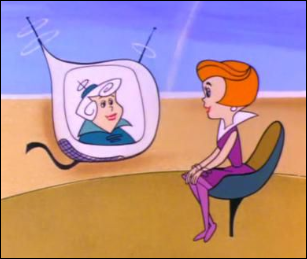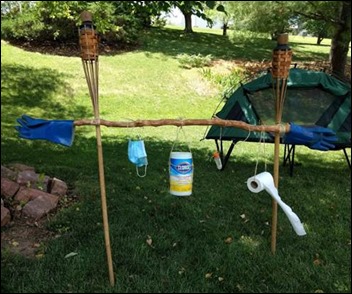"most people just go to Epic" that's a problem because then EPIC becomes a monopoly in healthcare, if it isn't…
EPtalk by Dr. Jayne 6/25/20
This week has been absolutely crazy, with plenty of firefighting of both the informatics and clinical varieties.
A client that I did a quality project for last year is in the middle of an EHR go-live with “virtual elbow support,” but they had no physician super-users identified. Hard to believe, but there are still physicians out there who feel like they really need to learn it from a physician. For the client, figuring that out right before the go-live was a big miss. I’ve been playing WebEx Whack-a-Mole with a couple of physicians who won’t listen to the resources right in front of them and trying to convince them to get with the program. I’m always happy to help clients who are in a rough place, but it’s exhausting.
At the same time, my clinical practice has been having record-breaking days that make the “Flumageddon” season of a couple of years ago look like a cakewalk. They’re constantly pleading for people to come in on their off days, and I’ve covered a couple of times just so the physicians who are scheduled can have a break to sit down, eat, and have a minute to themselves. Still, it’s a never-ending revolving door of COVID swabbing, antibody testing, and processing of lab results as well as following up on infectious patients. Add in the usual summertime orthopedic injuries, lacerations from whacking the back of your head on a diving board while trying to execute the perfect cannonball jump, and a couple of ruptured appendixes in patients who were “afraid to go to the hospital” and it’s a recipe for disaster.
We’re leading the region with antibody (serology) testing, and I have to say I have mixed feelings about it. The visits take a tremendous amount of time, as we counsel patients to understand that having a positive antibody test isn’t the immunity passport that they thought it would be based on what they saw on Facebook. Many of the patients had respiratory infections in January or February and we have to explain that with that timeline, it’s much more likely that they had flu or bronchitis or one of the other garden-variety illness that was going on.
The rates of positive antibody results in my area are low, and although it’s good data from the public health perspective, it doesn’t do anything for the management of individual patients and it sure adds a lot of cost to the healthcare system. Since most insurers are covering it 100%, patients are eager to feel like they’re “doing something.” The American Medical Association continues to be vocal in spreading the word that antibody tests aren’t the path back to our old normal. We still know too little about what protection antibodies might provide or how long it may last, and there are risks for both false-positive and false-negative tests.

The traditional July 1 start date for new interns and residents is less than a week away, and I don’t envy them the weirdness that they’re walking into. I was glad to read this heartwarming piece about a mother and daughter who both graduated from medical school this spring and matched together for residency. The elder Dr. Kudji had been a registered nurse and a nurse practitioner prior to entering medical school in her 40s and matched in family medicine. The younger Dr. Kudji will be pursuing a residency in general surgery.
Another piece sent by a reader tugs at the heart strings: A pediatric cardiologist in Bolivia was challenged to find a machine to create implanted devices to fix heart defects through a non-invasive procedure. He turned to the country’s indigenous women to weave the amazing devices by hand, often using a single piece of wire. It’s worth the watch just to see the devices in action as they deploy.

Less heartwarming was the invitation I received from the American Telehealth Association for their virtual conference, a mere three days before the multi-day meeting was to start. They must be desperate for attendees because they offered a code for $350 off the regular $650 registration price. I don’t know of too many physicians who can clear their schedule with just a couple of days’ notice. InTouch Health did a must better job promoting their upcoming conference with more than a month notice. The July conference is free and features multiple tracks, including a COVID one.
![]()
This week, CMS announced the creation of the Office of Burden Reduction and Health Informatics. It’s designed to continue the “work of reducing regulatory burden to allow providers to focus on patients instead of paperwork and reducing healthcare costs.” It appears to stem from the Patients over Paperwork Initiative (with CMS stubbornly refusing to capitalize the O, for some reason).
The CMS press release touted its successes, but as a frontline urgent care clinician, absolutely nothing has changed as a result of this ongoing work. My staffers are still collecting plenty of data elements that aren’t helpful at the point of care for the conditions I’m treating in the majority of my patients. There may have been benefits in reporting and streamlining of conflicting initiatives, but that doesn’t help us in the exam room.
CMS Administrator Seema Verma was quoted as saying the new office will “increase the use of health informatics” and I’m as eager as the next person to see what they have in store. Perhaps we could start with a nationwide unique patient identifier, since CMS says that “fostering innovation through interoperability will be an important priority.” That will also help with their goal of “new tools that allow patients to own and carry their personal health data with them seamlessly, privately, and securely throughout the healthcare system.”

From Just Betty: “Re: BJC HealthCare. Check out this data breach notification letter from one of its flagship hospitals. The return address on the letter is for a construction company in Sacramento, CA. Do you think it’s a scam?” There’s nothing quite like following one unfortunate event with another one. In this case, some suspicious activity in employee email accounts resulted in an investigation that was “unable to determine whether the unauthorized person actually viewed any emails or attachments in the employee email accounts.” Compliance officers reviewed the contents of those email accounts and found patient information that may have been accessible, including patient name, date of birth, account number, diagnoses, medications, providers, treatments, and facility locations. It’s hard to believe people are still emailing files around that contain PHI. The return address does indeed belong to a construction company 2,000 miles away from the corporate headquarters. In addition to looking for some employee training to prevent phishing, I bet they’re also looking for a breach notification vendor.

A reader sent me a link to a paywalled article about a “recovery area” at New York City’s Mount Sinai Beth Israel hospital. Designed for healthcare workers who need to escape, it features recliners, music, and aromatherapy to reduce stress. They’ve opened more than 10 rooms at different facilities and note a self-reported reduction in stress after only a 15-minute visit. Since this was the week I was supposed to be volunteering at a camp which is instead holding “Virtual Summer Camp,” I’m de-stressing in my yard. Today’s challenge was to build a camp gadget or campsite improvement. I’m not sure what my neighbors think of my COVID-essentials dispenser, but my fellow virtual campers enjoyed it.
What’s your favorite knot or lashing? Leave a comment or email me.
Email Dr. Jayne.



Favorite knot: Trucker’s Hitch. Very useful for pulling. Second place: Lark’s Head – simple and elegant
Another vote for the Trucker’s Hitch, followed by the Bowline Knot and Clove Hitch
A wise man once told me that the Trucker’s Hitch is the only knot you really need to know. It even works to keep raccoons out of your cooler.
I’m surprised you’re leaving such valuable commodities out in the open like that. The bowline is the most fun knot to tie, but isn’t that useful. The quick clove hitch is fun as well. Obviously, I based my knot tying on the fun associated with the knot, not the actual utility.